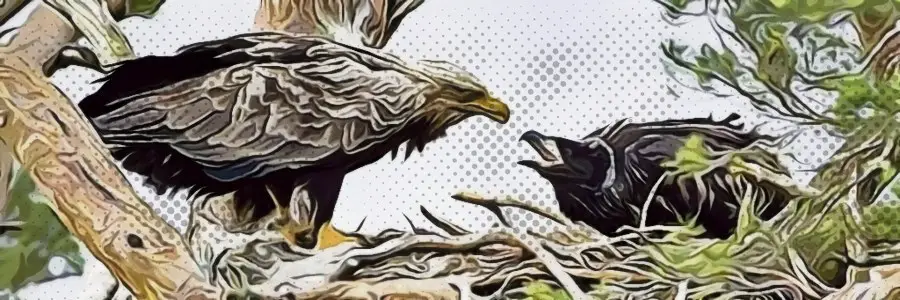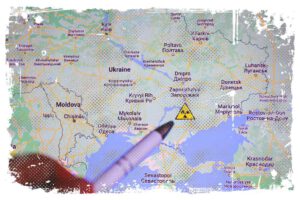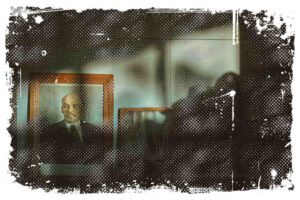As a Pole, I have always felt close to the nature that surrounds me. From the majestic Tatra mountain ranges to the peaceful beaches of the Baltic Sea, nature has always been a part of our national identity. Given that forests cover up to one-third of our country’s land area, it’s no surprise that the unique animal species have become national symbols.

Which of these animals is the most iconic? The white-tailed eagle (Haliaeetus albicilla) has long been considered the legendary animal of Poland, according to the oldest images. This majestic bird is the largest raptor in northern Europe, with a wingspan of over 2 meters. Despite its impressive size, it is actually more closely related to the osprey than it is to other eagles.
There are around 700 pairs of white tailed eagles in Poland. These incredible birds can be found in the western region of Pomerania, where they have long been a beloved symbol of strength and freedom.
What Does the Eagle Stand For?
The eagle plays very important role as animal in many different cultures. It is seen as a symbol of strength and power. In ancient times, people in Babylon and Persia respected the eagle a lot. The Roman leader Marius even used the eagle as his symbol after winning battles in the East. The eagle appeared on the flags of the Roman army as well as the tops of Roman leaders’ staffs.
↳ PRO TIP: Do you like traveling? Then before you buy any ticket or book an attraction, check if it's available in this worldwide Viator Database. You may save a lot of money and time. No need to thank me :)
The Legend of the White Eagle
In Slavic stories, there is a tale of three brothers named Lech, Czech, and Rus. They went out into the world to find a better life. Rus headed east, Czech headed south, and Lech went west. Lech stopped at a lake with a big tree and an eagle’s nest. It became the father of the Poles, and Gniezno, also known as the “eagle’s nest,” became our first capital city. That is why the eagle has been a symbol of the Polish people ever since.
According to legend, the founder of Poland, Lech, stopped near Poznan and saw a large nest in a tree. Inside the nest were a white eagle and its two chicks. As Lech watched, the eagle spread its wings against the red sunset sky. Lech was inspired by this and decided to settle there. He used the eagle as his coat of arms and naming the place Gniezdno (now Gniezno) after the word “nest”. This story is part of the legend of “Lech, Czech, and Rus” and was first written down in the “Chronicle of Greater Poland” (Latin, 1273) and the “Chronicle of Dalimil” (Czech, 1319). Please read my other article from which you can learn fascinating story on how Poland became country in Europe.
A Predator and the Bible
In Christian symbolism, the eagle is often associated with St. John the Evangelist. In this context, the eagle can be seen with spread wings on church lecterns, holding the Bible and protecting it from lies and deception. St. Jerome also believed that the eagle represented the Ascension.
Throughout European history, many rulers have chosen the royal eagle as a symbol of their own superiority over other princes. In this way, the eagle has come to be seen as a symbol of power and authority.
Poland’s Coat of Arms is a Crowned Eagle
In 1919, the Polish parliament decided to use a symbol of a white eagle in a crown as the country’s coat of arms. In 1927, the President of Poland changed the design of the eagle slightly. It was based on a design by Professor Z. Kaminski and was similar to the design used during the reign of Stefan Batory. This version of the eagle was used until 1945, when the crown was removed.
During the time of the People’s Republic of Poland, the eagle in the coat of arms did not have a crown. But the image of the white eagle with a crown was still an important symbol for the country. In 1990, the Polish parliament decided to use the current design of the coat of arms. It shows a white eagle with a golden crown, beak, and talons on a red background. This is the coat of arms of the Third Republic of Poland.
Following World War II, the 1927 eagle design was officially adopted as Poland’s coat of arms, albeit without a crown. During the time of the People’s Republic of Poland, the eagle in the coat of arms did not have it. However, the image of the white eagle with a crown remained an important symbol of national pride and was closely connected to traditional symbols.
On February 9, 1990, the Sejm (Polish parliament) adopted the current design, which features a white eagle with a golden crown, beak, and talons on a red background. This is the national emblem of the Republic of Poland.
Why Does The Eagle in the Emblem Look to the Right?
According to the rules of heraldry, the positioning of the eagle’s head to the right is natural and does not need to be specifically defined. This is because the right side is traditionally seen as the side of honor.
Who Designed Poland’s Emblem?
The current, widely accepted design of the national coat of arms of Poland was introduced by President Ignacy Moscicki in 1927. It was designed by Professor Zygmunt Kaminski, a painter. The shape of the eagle in the coat of arms is based on the Renaissance emblem used during the reign of Stefan Batory. This design has been in use since 1927 and remains the official coat of arms of Poland to this day.
Does the White Eagle Really Exist?
Historical records show that there were eagles with white feathers in Europe. In fact, there is even a white eagle from the late 18th century kept at the Natural History Museum in Vienna. This suggests that it is very likely that white eagles actually existed.
What Other Animals Are Connected to Poland?
Both storks and eagles, as well as bison, are well-known symbols of Poland. These animals are seen as representing the country and its national identity.
European Bison
In eastern Poland, it is not uncommon to see the European bison, also known as Bison bonasus. This species is descended from two animals that no longer exist: the aurochs and the primeval bison. The European Bison was also close to extinction, with the last wild specimens being killed in the Caucasus in 1927. However, some were saved in ZOOs and later reintroduced into the wild.
European Bison are a symbol of nature conservation in Poland. A hundred years ago, they were almost extinct. Thanks to the efforts of scientists, foresters, veterinarians, and other committed people, the bison population was saved and is now increasing. There are around 4,000 bisons in the wild today, with most of them in Poland. The Bialowieza Forest alone has about 500 bison, and there are a similar number in other forests throughout the country. Poland has a long history of protecting these animals, with hunting restrictions first put in place by the country’s kings.
The European bison is the strongest land animal in Europe. It can weigh up to 700 kg and is 3.5 meters long and almost 2 meters tall. This makes it larger than its famous relative, the American bison.
Stork
Perhaps the real symbol of Poland can be found in another seemingly unremarkable animal – the white stork (Ciconia ciconia). Despite weighing less than 5 kg, these birds are incredibly determined migrants. They can travel up to 250 km per day during migration, even with a wing injured by an arrow. In the past, African arrows were found in the bodies of these birds, which motivated naturalists to study their migration patterns. Overall, the white stork is a small but mighty symbol of determination and resilience.
Conclusion
The White Eagle has been an important part of Poland’s legal and social structures for centuries. It has remained a symbol of reference for the nation and state, even during times when Poland’s independence was challenged. The White Eagle is highly valued by the Polish people and has been preserved through many difficult periods, including partition, World War II, and communist rule. It represents the history and values of the country, and its power symbolizes the unity of all Poles. The White Eagle is a significant part of the lives of the Polish people, as it is connected to the country’s history and traditions.




